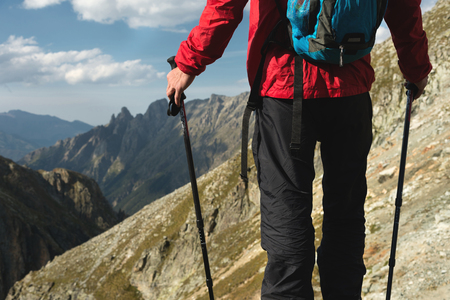Assessing Site Conditions and Local Wildlife
Before commencing any trail restoration project in the UK, a thorough assessment of site conditions is fundamental for ensuring both safety and sustainability. Understanding the unique characteristics of each trail environment helps guide effective decision-making throughout the restoration process. Begin with an evaluation of soil type, as British soils can vary greatly—from chalky and free-draining to heavy clay—which will impact erosion control measures and the selection of appropriate materials for resurfacing or reinforcement. In tandem, assess the existing vegetation; native plant species play a vital role in stabilising soils and providing habitats for local wildlife. It is best practice to conduct detailed surveys to identify not only dominant flora but also any invasive species that might threaten ecological balance.
A comprehensive understanding of the presence and habits of native wildlife is equally important. The UK’s rich biodiversity includes protected species such as dormice, bats, newts, and various birds—all of which may be affected by trail works. Carrying out ecological surveys at the appropriate times of year ensures compliance with environmental regulations such as the Wildlife and Countryside Act 1981. Engaging local ecologists or conservation officers can provide invaluable insights into habitat sensitivities and necessary mitigation strategies. By prioritising site-specific assessments and respecting existing ecosystems, practitioners lay a solid foundation for safe, sustainable trail restoration that aligns with both legal requirements and conservation goals.
2. Risk Management and Health & Safety
Ensuring safety and managing risks effectively are foundational principles in any trail restoration project across the UK. It is essential to systematically identify potential hazards, carry out thorough risk assessments, and ensure all activities adhere to British health and safety standards. This includes not only compliance with legislation such as the Health and Safety at Work Act 1974 but also the adoption of best practices tailored to the unique challenges of outdoor environments.
Identifying Potential Hazards
The first step in risk management is hazard identification. Common risks in trail restoration projects include uneven terrain, exposure to adverse weather, manual handling injuries, use of hand tools, proximity to water bodies, and encounters with wildlife or vegetation. Site-specific walkovers and pre-start briefings help uncover less obvious hazards unique to each location.
Hazard Identification Checklist
| Hazard Type | Examples | Mitigation Actions |
|---|---|---|
| Terrain & Slips | Muddy paths, loose stones | Clear signage, anti-slip mats, sturdy footwear |
| Weather Exposure | Rain, heat, cold snaps | Appropriate clothing layers, hydration points |
| Manual Handling | Lifting timber, moving rocks | Team lifts, proper technique training |
| Chemicals/Tools | Pesticides, saws | PPE usage, tool safety briefings |
| Wildlife & Flora | Nettles, ticks, wasps | Avoidance training, first aid kits on site |
Conducting Risk Assessments
A formal risk assessment should be completed before any work commences. This process involves evaluating the likelihood and severity of identified hazards and implementing controls to minimise these risks. All team members must be briefed on findings and provided with safe working procedures specific to their tasks.
Risk Assessment Process Overview
- Identify all hazards present on-site.
- Assess who might be harmed and how.
- Evaluate existing control measures.
- Implement additional controls if necessary (e.g., barriers, signage).
- Record findings and share with all workers.
- Review regularly—especially after incidents or environmental changes.
PPE and Safe Working Procedures in the UK Context
The use of Personal Protective Equipment (PPE) is non-negotiable. In line with British standards (such as BS EN 166 for eye protection), suitable PPE may include high-visibility vests, steel-toe boots, gloves, eye protection, hard hats, and hearing protection depending on the task. Regular toolbox talks reinforce correct PPE usage and remind teams about safe manual handling techniques and correct tool operation. It’s also critical that every site has clear emergency procedures and accessible first aid kits.
PPE Requirements Table for Typical Trail Tasks
| Task/Activity | Required PPE |
|---|---|
| Laying aggregate surfaces | High-vis vest, gloves, safety boots, dust mask (if dry) |
| Using hand tools (spades/saws) | Gloves, safety boots, eye protection |
| Chemical application (herbicides) | Chemical-resistant gloves/apron, eye protection, mask as needed |
By embedding these best practices into every phase of trail restoration work—planning through execution—you safeguard workers’ wellbeing while upholding a culture of health and safety that meets UK expectations. This commitment not only reduces accidents but also strengthens public confidence in the sustainability credentials of your project.

3. Community Engagement and Volunteer Training
Engaging the local community is a cornerstone of successful trail restoration projects across the UK. Effective involvement begins with open communication and transparent planning, ensuring that everyone from regular users to nearby residents understands the goals and benefits of the project. Hosting public meetings, collaborating with local councils, and using social media platforms can help gather feedback and foster a sense of ownership among stakeholders.
Coordinating with landowners is equally vital, especially as many British trails traverse private or common land. Early dialogue helps clarify boundaries, responsibilities, and permissions, reducing conflicts and building trust. It’s essential to respect landowners’ concerns about access, liability, and environmental impact. Formal agreements or memoranda of understanding can provide clarity on maintenance duties and long-term stewardship.
Volunteer involvement is at the heart of most trail restoration efforts in the UK. To ensure safety and sustainability, comprehensive training programmes should be put in place. Introductory sessions should cover health and safety basics, such as risk assessment, correct use of tools, and safe working practices in variable weather conditions typical of British landscapes. Further training must emphasise sustainable techniques—like minimising soil erosion, protecting native flora and fauna, and using local materials—to maintain the integrity of both the path and its surroundings.
Structured induction days, practical demonstrations, and mentorship from experienced volunteers help embed these best practices. Providing clear written guidelines and access to first aid resources also reassures participants about their wellbeing. Recognising volunteer contributions through certificates or community events can further motivate ongoing engagement.
Ultimately, fostering strong partnerships with communities and thorough training for volunteers not only ensures safer worksites but also promotes lasting stewardship of restored trails for future generations.
4. Use of Sustainable Materials and Tools
When undertaking trail restoration in the UK, the careful selection of materials and tools is paramount to achieving both safety and sustainability. Prioritising eco-friendly choices not only preserves local habitats but also ensures long-term resilience for frequently used public paths.
Eco-Friendly Material Options
The use of locally sourced and renewable materials reduces transport emissions and supports regional biodiversity. Here’s a comparative overview of sustainable options commonly available across the UK:
| Material Type | Sustainable Alternative | Environmental Benefit |
|---|---|---|
| Aggregate | Locally quarried gravel or recycled crushed concrete | Reduces carbon footprint, conserves natural resources |
| Lumber/Timber | FSC-certified British hardwoods (e.g., oak, sweet chestnut) | Supports managed woodlands, avoids deforestation |
| Edging & Retaining Structures | Reclaimed stone, recycled plastic lumber | Minimises waste, durable against UK weather conditions |
| Erosion Control Matting | Jute or coir geotextiles | Biodegradable, prevents soil loss without synthetic residues |
Efficient and Low-Impact Tools
Selecting the right tools can further minimise environmental impact while maintaining high safety standards for volunteers and workers. The following are widely adopted in British trail projects:
- Manual Hand Tools: Spades, mattocks, and loppers allow precise work with minimal disturbance to surrounding flora and fauna.
- Biodiesel-Powered Machinery: Where mechanical intervention is necessary, opting for equipment using biodiesel helps reduce emissions.
- No-Dig Solutions: Utilise specialist turf cutters or root-friendly implements to avoid unnecessary soil disruption and tree damage.
- Reusable Fixings: Stainless steel screws and brackets can be recovered and reused in future repairs, promoting a circular approach.
Cultural Considerations in UK Trail Work
The UK’s diverse landscapes—from National Parks like the Lake District to historic bridleways—demand sensitivity to heritage as well as ecology. Sourcing materials that reflect local character (e.g., Cotswold stone) aligns with community expectations and planning requirements.
Key Takeaway:
The best practice is always to assess each site individually, consult with local authorities such as Natural England or Scottish Natural Heritage, and keep abreast of regional supply chains for sustainable material procurement. By integrating these principles into every stage of trail restoration, project teams contribute meaningfully to both public enjoyment and long-term environmental stewardship.
5. Erosion Control and Long-Term Maintenance
Effectively managing erosion and ensuring the longevity of restored trails are central tenets in UK trail restoration projects. The British climate, with its frequent rainfall and varied terrain, demands robust strategies to prevent soil degradation and maintain trail integrity.
Techniques for Preventing Soil Erosion
To mitigate soil loss, start by employing natural barriers such as coir logs or locally sourced timber along vulnerable trail edges. These not only blend aesthetically with the landscape but also slow water flow and trap sediment. Installing stone pitching or aggregate surfacing on steeper gradients helps stabilise paths, while vegetative solutions—like reseeding with native grasses—anchor the soil effectively. Where necessary, geotextiles can be applied beneath surface materials to further enhance stability without impeding drainage.
Managing Water Runoff
Proper water management is crucial to both safety and sustainability. Adopt a ‘shed water early and often’ principle: install cross-drains, water bars, and gentle outsloping to divert surface water off trails before it gains erosive force. In wetter areas common across the UK, consider constructing boardwalks or raised causeways to protect sensitive habitats from trampling and channel flow away from the path. Regularly check that ditches and culverts remain clear of debris to maintain their effectiveness throughout the year.
Establishing a Maintenance Schedule
Sustainable trail management requires ongoing attention rather than a one-off intervention. Develop a maintenance calendar tailored to local conditions—inspecting high-use routes more frequently, especially after heavy rainfall or freeze-thaw cycles typical in Britain. Schedule periodic checks for drainage features, surfacing wear, and vegetation encroachment. Engage local volunteers and user groups in reporting issues and participating in work parties, fostering stewardship within the community.
UK Best Practices for Long-Term Sustainability
Follow guidelines set out by organisations such as the National Trust, Scottish Natural Heritage, and local Rights of Way teams. Document all interventions in a site logbook: note dates of inspections, maintenance tasks completed, and observed issues. This transparent record-keeping supports adaptive management—adjusting methods based on what works best in your specific landscape and climate.
Conclusion
By integrating proven erosion control measures, effective water runoff management, and routine maintenance schedules rooted in UK standards, restoration practitioners ensure that trails remain safe, accessible, and ecologically sound for future generations.
6. Legal Compliance and Stewardship
Ensuring legal compliance is a fundamental component of safe and sustainable trail restoration projects in the UK. Project teams must pay close attention to land access rights, which often involve navigating complex arrangements between private landowners, local authorities, and public bodies. It is essential to establish clear permissions, as defined under the Countryside and Rights of Way Act 2000 (CROW Act), and to respect existing public rights of way. Adhering to these regulations helps avoid disputes and ensures that trail work does not inadvertently trespass or compromise protected areas.
Public liability is another key consideration. Trail restoration activities expose both workers and the public to potential hazards, making it vital for organisations to carry adequate insurance cover in line with the Occupiers’ Liability Acts of 1957 and 1984. Regular risk assessments, clear signage, and robust health and safety procedures are mandatory best practices. These efforts protect all stakeholders while upholding the Health and Safety at Work etc. Act 1974.
Ongoing stewardship extends beyond initial project completion. Responsible management includes regular maintenance inspections, monitoring for environmental impact, and engaging with the local community. The adoption of guidance from Natural England and The British Mountaineering Council’s codes of practice supports long-term sustainability goals. Engaging local volunteers through stewardship agreements fosters a sense of shared responsibility, helping trails remain accessible, safe, and ecologically sound for future generations.


